QuestionHello, im a new leopard gecko owner. me and my fiance have had them for about 2 weeks, and one has already shed. as for the others, they seem to have dry skin?? they have like little white flakes on their skin. i dont know if there sick or if there trying to shed but its not working? is my tank to moist? i just put in calcium sand a couple of days ago and have been spryaing with water to help the one male shed. what is it thats happening tp them?
AnswerHi Candace,
A few things I want to point out in addition to your questions and a care sheet I wrote to help owners out with leopard gecko care.
Sand or other loose substrates (calci sand is the worst) should not be used with leopard geckos as it can cause internal blockages which kills them or requires expensive surgery in the hope that it can remove the blockage. More info on proper substrate is in the care sheet.
Leopard geckos do not do well with humid environments. It can cause respiratory infections in them. When you mist, you only want to do enough so that if they drink from the droplets on the glass...or plants.
You say "the others". This concerns me as that I am guessing you mean more than two. If you do not know the sex of the leos, you are going to have major damage done to one or more of them as males can never be housed together. Many times even females cannot be housed together. If you have one male and the rest female, even if you don't want breeding going on, it will go on and many times it will happen when the leos are too young to be bred safely for both the male and females. Egging and breeding is very, very stressful on both sexes. When housing several leos together, its very important to provide enough room for all of them. One leo should have a 20 gallon tank...two can live in a 20 gallon, but more than that, its too crowded and stressful.
I'm guessing you aren't providing a humid hide for your leos. A humid hide is vital to their shedding process. Leos shed in basically one piece when they shed. They then eat their shed. In the care sheet I offer suggestions as to making a proper humid hide.
Be sure to check the toes and tail of your leos to make sure all the shed has come off as if it is retained, it can cause circulation to be cut off to the toes, tail.
Double check your temperatures to make sure you have the proper gradient temperature zones which are also vital to their overall health and well being.
BASIC CARE FOR A LEOPARD GECKO
Leopards are pretty easy to care for but they do need
special care. Here are some of the basic needs of your gecko.
HOUSING: The need to have at least a 20 gallon long tank for one Leo. This needs to have a secure fitting screen top...they can be quite the escape artists!!! They need to have a humid hide box.You can make this with something as simple as a small plastic dish with a hole cut in one side and a small mesh bag filled with some Sphagnum moss coconut bark or Peat moss that you mist.
I made mine out of the small plastic folgers coffee containers...I cut an opening in the lid..and put the moss in..they LOVE it. I use the terrarium moss in mine.
I use that on the warm side of the tank. Be sure to provide a cool hidebox on the other end. I also provide a mid temperature hide...which is in the middle of the tank.I use the critter caves which you can purchase. NOT the ones that have heat in them!!!!
Provide secure climbing areas for your gecko. Fake plants, rocks and branches are all fine to use. be sure there are no wires or sharp ends to any fake plants you use.
*****SUBSTRATE:(that's the stuff on the floor of your tank) Newspaper, lizard carpet or paper towels work great and are easy to clean and are much safer than any loose substrate. Sand or other loose substrate is not recommended as that they can be deadly to the leo when it is ingested(eaten, even by accident while eating their insects)...A very graphic site of an impacted leo surg can be seen at http://homepage.mac.com/exoticdvm/reptile/PhotoAlbum181.html it is very graphic!!! ******What I have found that works great for safety and heat distribution is using about 1/4 inch of childrens play sand(since the tiles fit tight together, there is no sand danger) on the bottom of the tank and on top that you place ceramic or slate floor tile. What is nice is that the 12 x 12 squares fit perfect in a 20 gallon tank with no spaces between the tiles. The sand and the tile distribute the heat wonderfully. Using the under tank heater as described is what distributes the heat. Also, overhead heat will help in heating the tiles...I've been using this set up for several years and the leos love it. Using a tile that isn't smooth is recommended. **********
TEMPERATURES: They need a warm area of 88-92 degrees and a
cooler area in the upper 70s, low 80s. At night their temperature can drop to the low to mid 70's.
Never use a hot rock for a leopard gecko...or any reptile.
They can severely burn any reptile. You can use a heating
pad under the tank,under tank heater, or you can use a regular household lightbulb in a dome fixture with a ceramic socket in it to keep the warm area at the 88-92 degree area.At night, no white light. If room temperatures stay above 70 degrees, no extra night heat is needed. The undertank heater or heating pad should cover about 1/3 of the tank....be sure to raise the tank up about 1/4-1/2 inch off the stand when using an undertank heat source to prevent heat build up which can cause the glass to break and hot spots in the glass. Be sure to have a good layer of newspaper, carpeting or, even a thin flat rock(such as tile) on top the area that the undertank heat source is placed...if you use a thin rock or tile, it helps to distribute the heat very well.
You can use the special nighttime lights that are designed for reptiles. I like using a ceramic heat emitter on a thermostat for nighttime heat.
DO NOT use black lights or party lights as they can cause eye damage!!!!
The wattage you use will vary based on room temperature and size of tank.
LIGHTING: Leopard geckos do not need UVB lighting but it does not hurt them to give them uvb. They should have some type of light during the day, be it a uvb tube, regular florescent light, reptile day light or regular household lightbulb. NO white lights at night!!!
FEEDING: Geckos should not be fed crickets or other insects that are bigger than the space between their eyes. Generally, hatchlings can be fed more than once a day,juvys can be fed twice a day, adults are fed once daily or every other day, in the early evening. Crickets and other food items such as silk worms, super, and an occasional treat of a wax worm, need to be dusted with a calcium supplement two times a week and also they should have a small dish of calcium in their tank. I use the lid of a milk jug for the little dish of calcium in their tank. For dusting the insects, Use a calcium with no added phosphorus. Insects must be gut loaded(fed) for at least 48 hours prior to feeding your gecko. Remove any uneaten crix or superworms after 15-20 minutes..... Place a piece of cut potato in the tank so that if you have missed any uneaten insects, they will eat the potato instead of nibbling on your gecko!!!
*************You have to be sure to feed your crickets and insects the right foods before feeding them to your gecko. If your crickets/insects are not healthy and well fed, your gecko will not get the nutrition he needs. You can gut load your crickets and insects greens, veggies, cereals or specially designed commercial foods for crickets or the insects you are feeding. ************
Be sure to have a small dish of clean water for your gecko at all times!!
You can offer them some baby food or fruits on occasion ...
Mine will even eat a small piece of watermelon now and then.WATER: always provide a dish of drinking water. If you choose to mist your gecko to drink, its best to not get the tank too wet as that they do not do well with higher humidity. Sometimes its better to take your leo out of their tank to mist them to get them to drink!!!
HANDLING: Some geckos enjoy being held...others prefer not to be handled at all. Be sure to be very gentle when holding your leo and NEVER grab them by the tail! Their tails are extremely fragile and will break.
I do suggest finding a vet that can treat reptiles BEFORE you actually need one!!! To find a vet that is able to care for reptiles:
http://www.herpvetconnection.com
http://www.arav.org/ECOMARAV/timssnet/amm/tnt_mdsearch.cfm
http://www.anapsid.org/vets/
For more information on leopard geckos:
http://www.drgecko.com
If you have any questions or don't understand something, please let me know.

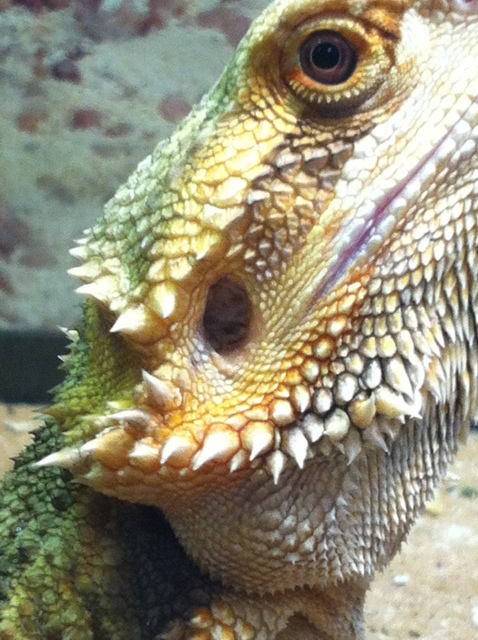 Bearded Dragons ear membrane does not look normal
QuestionQUESTION: Hello Tracie,
I have a Bearded Dragon
Bearded Dragons ear membrane does not look normal
QuestionQUESTION: Hello Tracie,
I have a Bearded Dragon
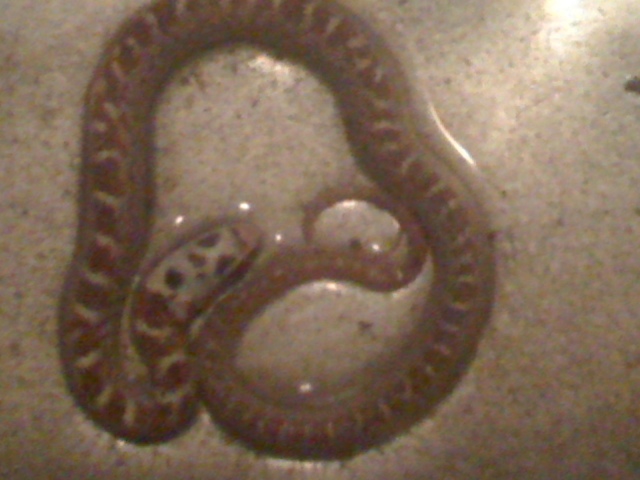 Snake ID?
Question
snake
This snake was found in my backyard. I h
Snake ID?
Question
snake
This snake was found in my backyard. I h
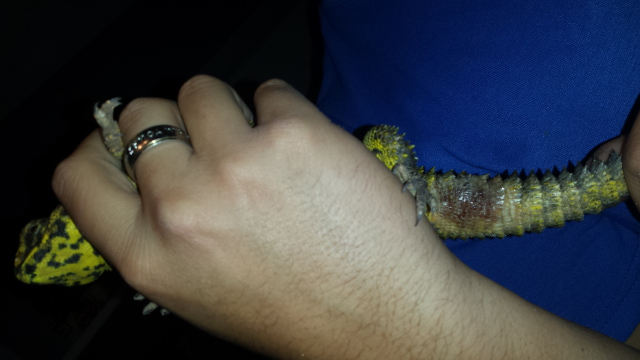 please help
Question
sore him
Please tell me what thi
please help
Question
sore him
Please tell me what thi
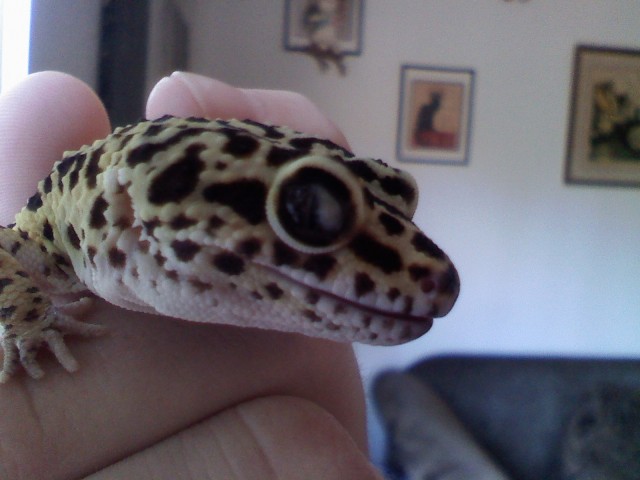 My leopard Gecko Im afraid has skin from shedding stuck in its eye
Question
Yoshis eye
My leopard Gecko Yoshi was fine yes
My leopard Gecko Im afraid has skin from shedding stuck in its eye
Question
Yoshis eye
My leopard Gecko Yoshi was fine yes
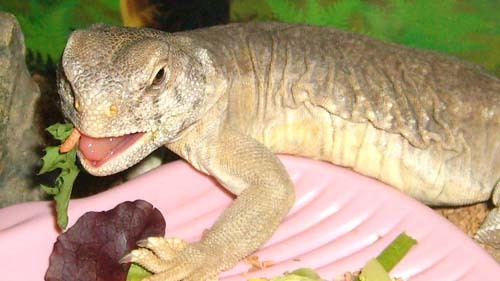 Suey has a new problem-Uncontrollable jerking
QuestionSuey eating veggies
QUESTION: Tracie,
Hi
Suey has a new problem-Uncontrollable jerking
QuestionSuey eating veggies
QUESTION: Tracie,
Hi